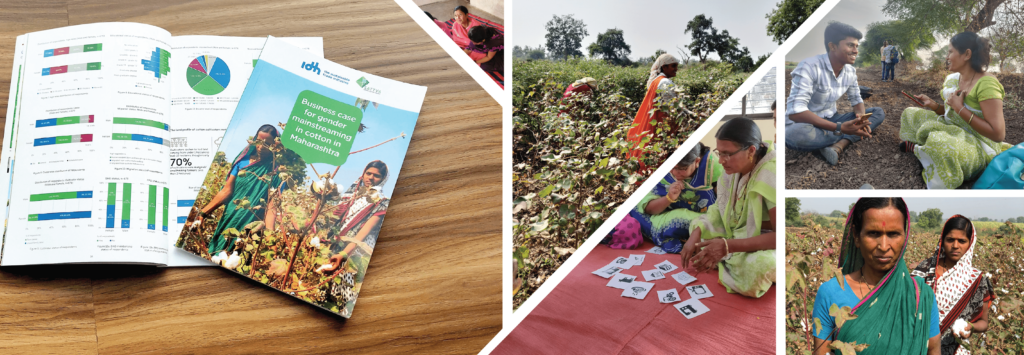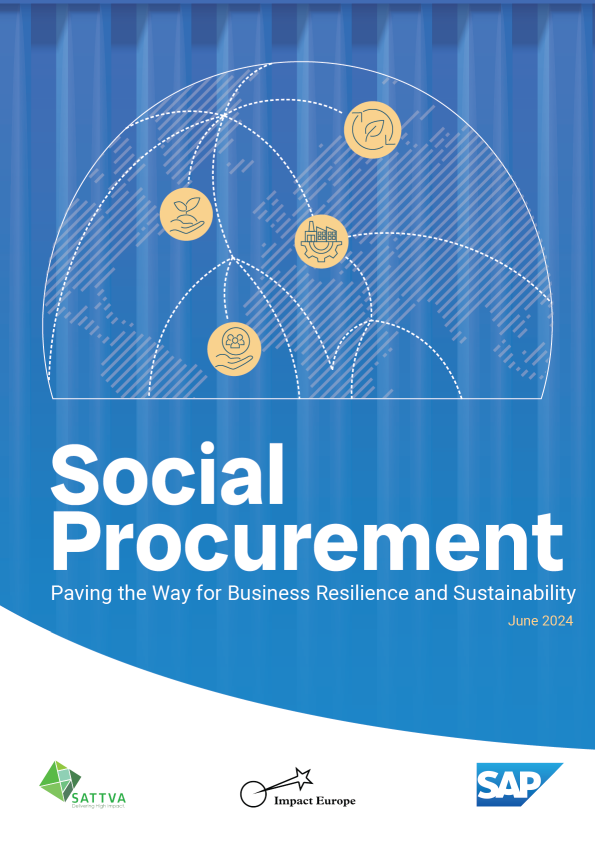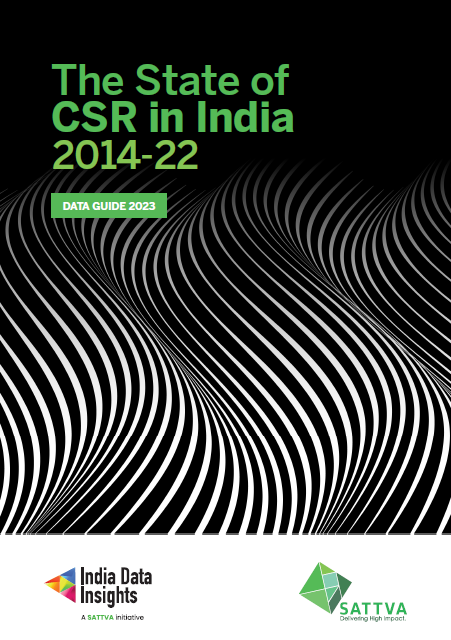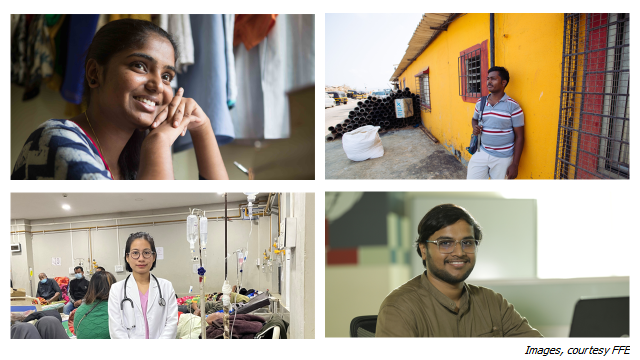Business Case for Gender Mainstreaming in Cotton in Maharashtra
Background
India is the largest producer and second largest exporter of cotton in the world, providing direct livelihood to 6 million farmers, and indirect livelihood to about 40-50 million people employed in cotton trade and processing.
Women perform a majority of the tasks involved in cotton cultivation, but play a limited part in agricultural decision-making, have low involvement in market-facing roles and little control over profits. Typically, women cultivators don’t have land titles in their name, and are often ignored stakeholders in farm-related interventions. They also have reduced access to agronomic training programs and information, and agriculture extension services provided by the government.
To further understand the potential of women cotton cultivators in driving improved business outcomes and profitability in cotton production, Sattva and IDH The Sustainable Trade Initiative conducted a gender analysis of cotton cultivation in the Vidarbha and Marathwada regions of Maharashtra between September 2018 and January 2019. This included exploring and quantifying the gender division of roles, responsibilities and access to resources, current farm practices, and the labour burden of male and women cultivators in the production process. The study sought to understand current gaps in cotton production and identify opportunities that could enable ecosystem players, cotton value chain actors, businesses, and programme implementers to make well-founded decisions based on a business case for strengthening the involvement of women cultivators.
Key Findings
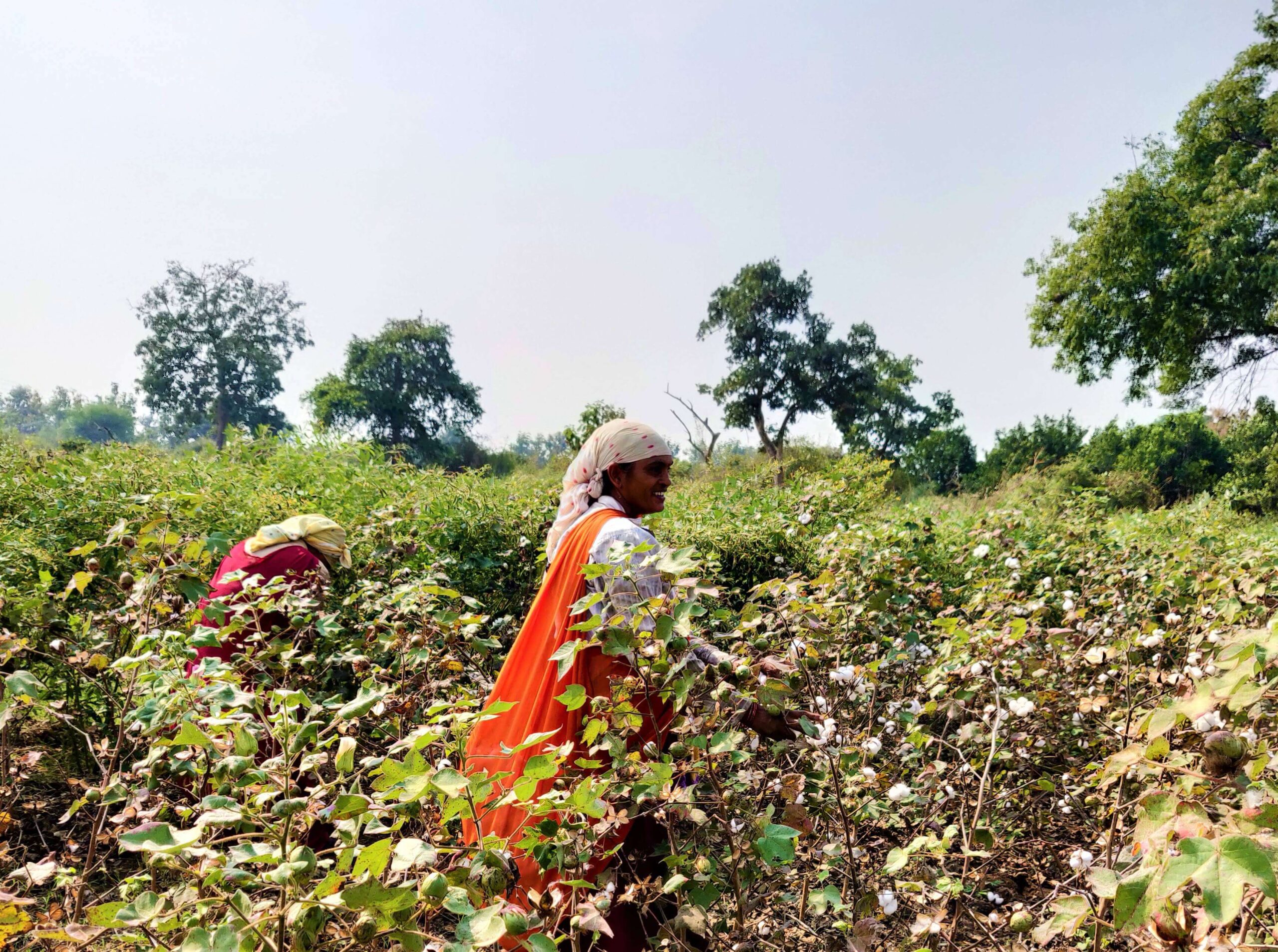
1. Social norms impact the way women cultivators engage with the agricultural ecosystem
- Tasks undertaken by women cotton cultivators are perceived to be ‘lighter work’, even though these tasks are highly manual, drudgery-prone and time intensive.
- Women cultivators spend more farming days (80-90%) on the field compared to men (10-20%) through the cotton production cycle. In addition, women cultivators spend 8 additional hours engaged in household tasks daily. While household responsibilities are unpaid, the economic contribution of women cultivators on their own field also goes unmeasured.
- Social norms limit mobility and the ability of women cultivators to take on front-facing, ‘high value’ roles. They also limit access to productive resources such as land, extension services, tools and finance, that are relatively easier to access for their male counterparts.
- Women cultivators were typically paid INR 150 per day and men were paid INR 200-300 per day. Lower levels and reduced control over income limit the level of empowerment women cultivators can achieve.
2. Tasks undertaken by women cultivators directly impact the quantity and quality of cotton produced
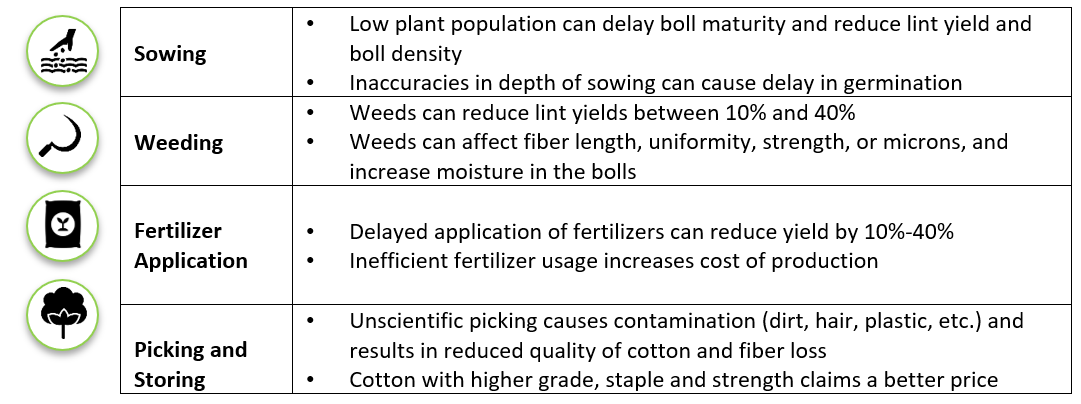
3. The time spent by women on the field can be leveraged to implement integrated pest management
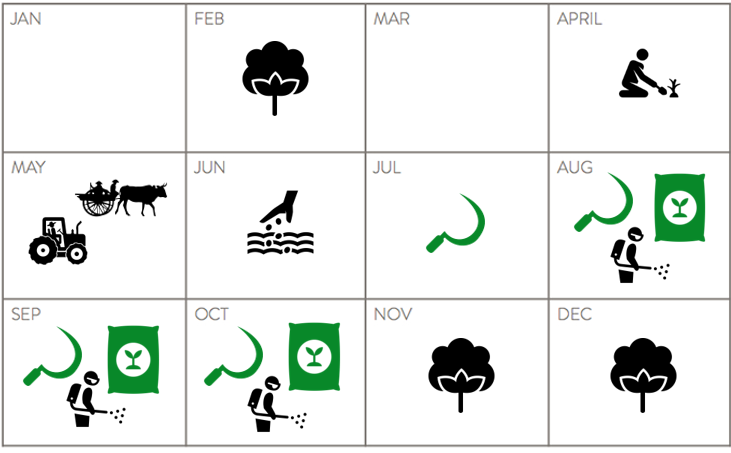
- While engaged in weeding and fertilizer application, women are on the field during the early schedule of pest monitoring (June to September)
- The time spent by women cultivators on the field can be leveraged to monitor for pests and reduce the incidents of pest attacks
4. Though women undertake majority of the tasks in cotton production, primary decision-making still lies in the hands of male cultivators.
- Women cultivators were more likely to say that decisions were made by both men and women. Male responses for the decision-making category ‘both’ are consistently 8-10% points lower than women’s responses.
- Even when decisions were taken together, there could be varying degrees of participation by the women cultivators. The final decision was almost always taken by the male member of the household.
5. Despite their role in cotton production, women cultivators have limited access to resources.
- 33% of the women cultivators had attended any training in the last two years. Yet, if training was provided to women, there was a 30-40% increase in adoption of best farm practices.
- 16% of the women cultivators surveyed held land titles in their name.
- 15% of the women cultivators surveyed had accessed any government schemes, with lack of knowledge cited as the main limiting factor
- SHGs remain an un-leveraged source of financial support for cotton. While most farmers depended on store credit, only 28% of the women cultivators shared that they get credit for cotton from SHGs.
The study found that solving for the restrictions and challenges faced by women cotton cultivators has the potential to achieve improved business outcomes, including an increase in the quality and quantity of cotton produced, ultimately increasing household incomes. It also results in better social outcomes such as increased participation of women cotton cultivators in decision making.
The full report can be accessed below.
Business Case for Gender Mainstreaming in Cotton in Maharashtra – Full Report
Approach and Framework
The gender analysis framework developed by Sattva helped build an understanding of the gender division of roles and responsibilities on the farm, participation in decision-making, and access to productive resources. The framework also analyzes the underlying gender and socio-cultural norms which could influence the division of roles and access to ecosystem support. The study is the first to build a business case for gender mainstreaming in the agricultural value chain.

Using quantitative and qualitative research methods, the study sought to answer the following questions:
- What is the role played by women cultivators in the production of cotton and how does it contribute to the quality and quantity of the cotton produced?
- How can business outcomes in cotton production be strengthened by enhancing the engagement of women cultivators on the farm?
- How are women’s roles on the farm influenced by underlying gender norms? How can these norms be influenced or changed to improve and enhance women’s outputs and profitability?
- What is the current ecosystem around women cultivators? How can it be strengthened to influence the contribution of women cultivators in cotton production?
Methodology

The study included quantitative surveys 515 women cotton cultivators and 164 male cotton cultivators. 19 focus group discussions were held with over 125 respondents across Amravati, Yavatmal, Aurangabad and Parbhani, while qualitative interviews were conducted with 26 relevant stakeholders including NGOs, Farmer Producer Organizations (FPOs), ginners, brands and experts in the field.
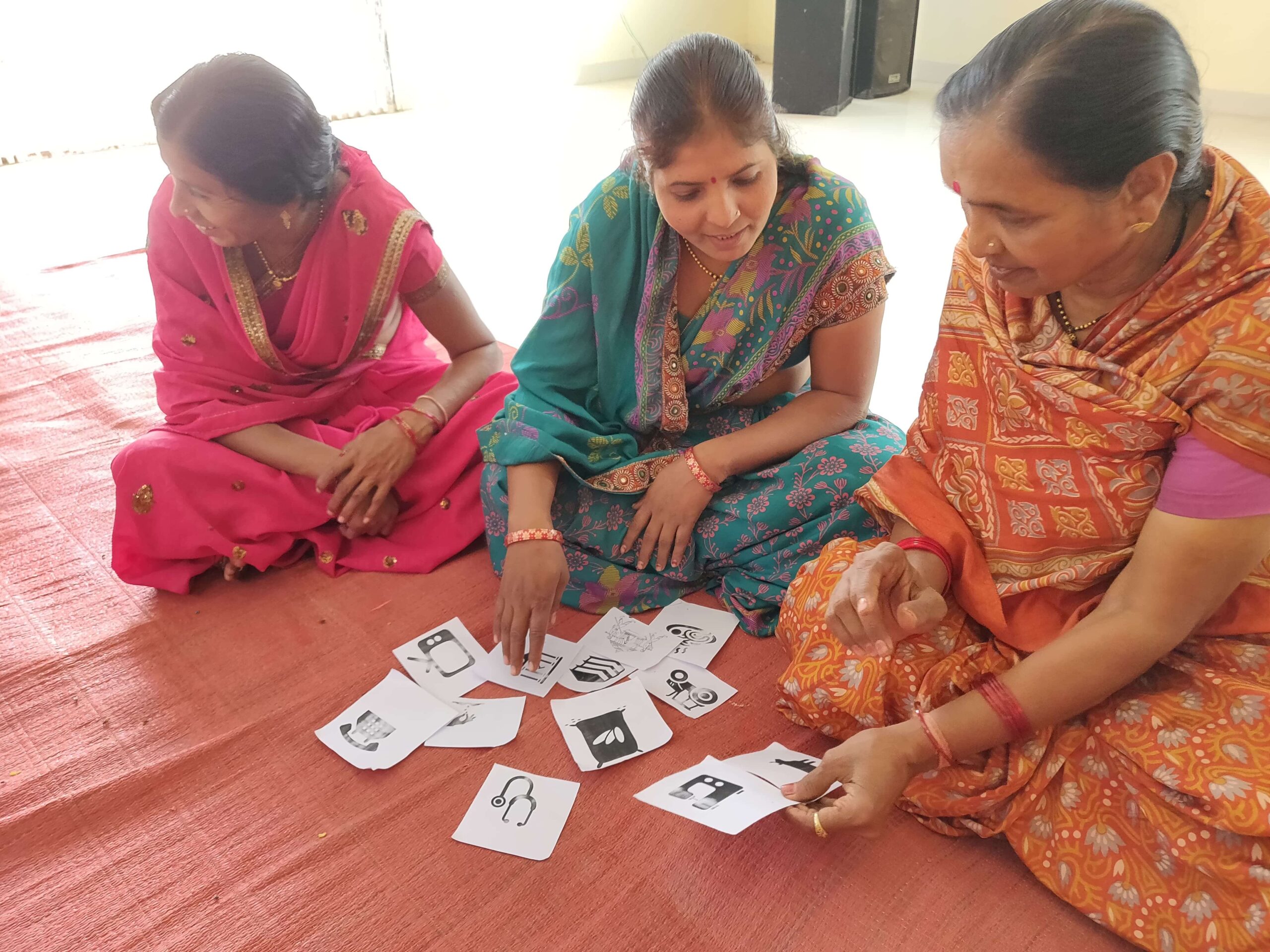
Event: Farmer Incomes’ and Gender Mainstreaming in Cotton Cultivation
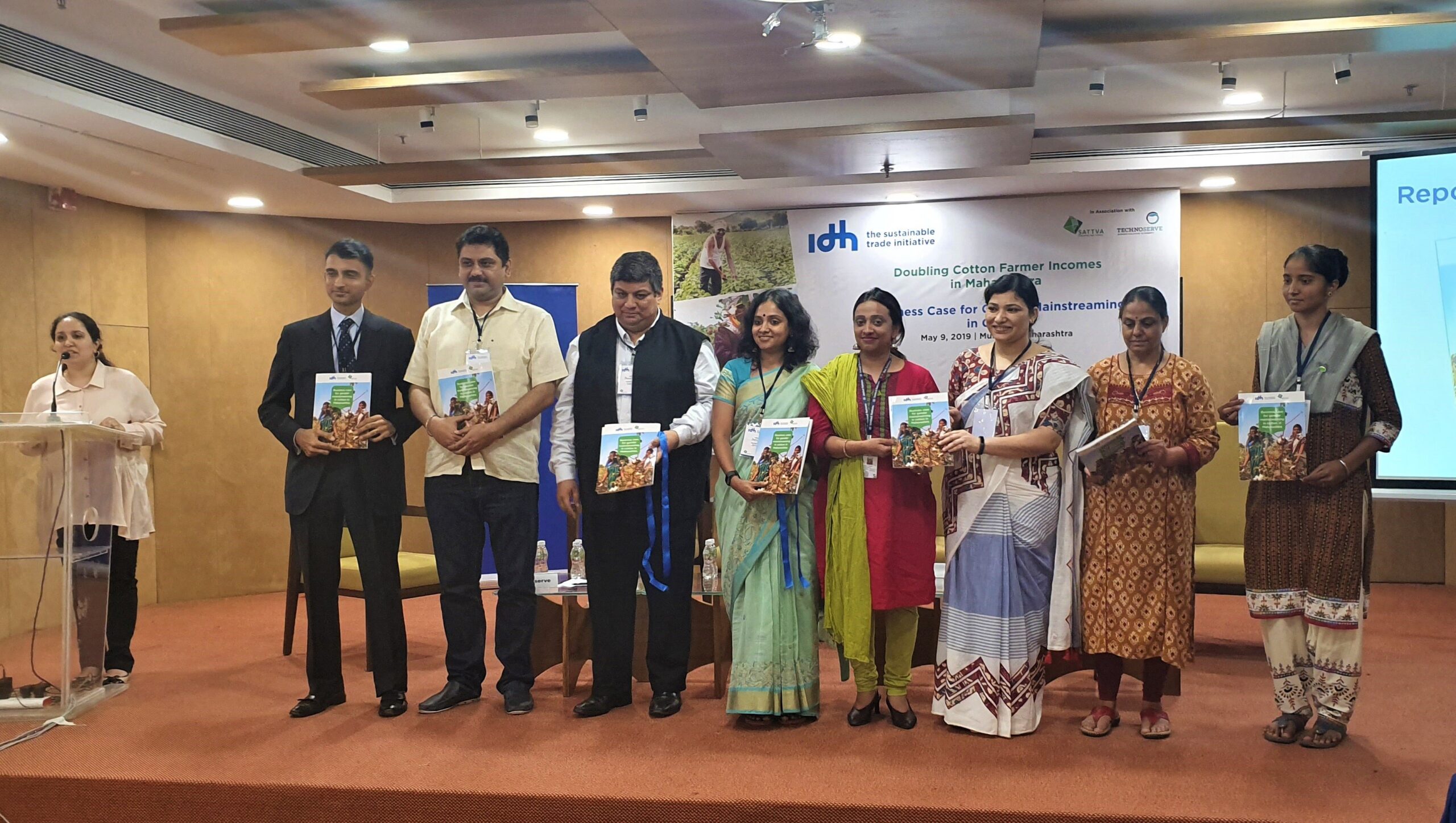
IDH The Sustainable Trade Initiative unveiled the ‘Business Case for Gender Mainstreaming in Cotton in Maharashtra’ with knowledge partners Sattva in Mumbai on May 9. The event featured the launch of two reports ‘Doubling Cotton Farmer Incomes in Maharashtra’ and ‘Business Case for Gender Mainstreaming in Cotton in Maharashtra ’, followed by an interactive session on key findings from the reports.
Would you like to partner with us to further the conversation around gender mainstreaming in the agriculture value chain? Write in to knowledge@sattva.co.in.
